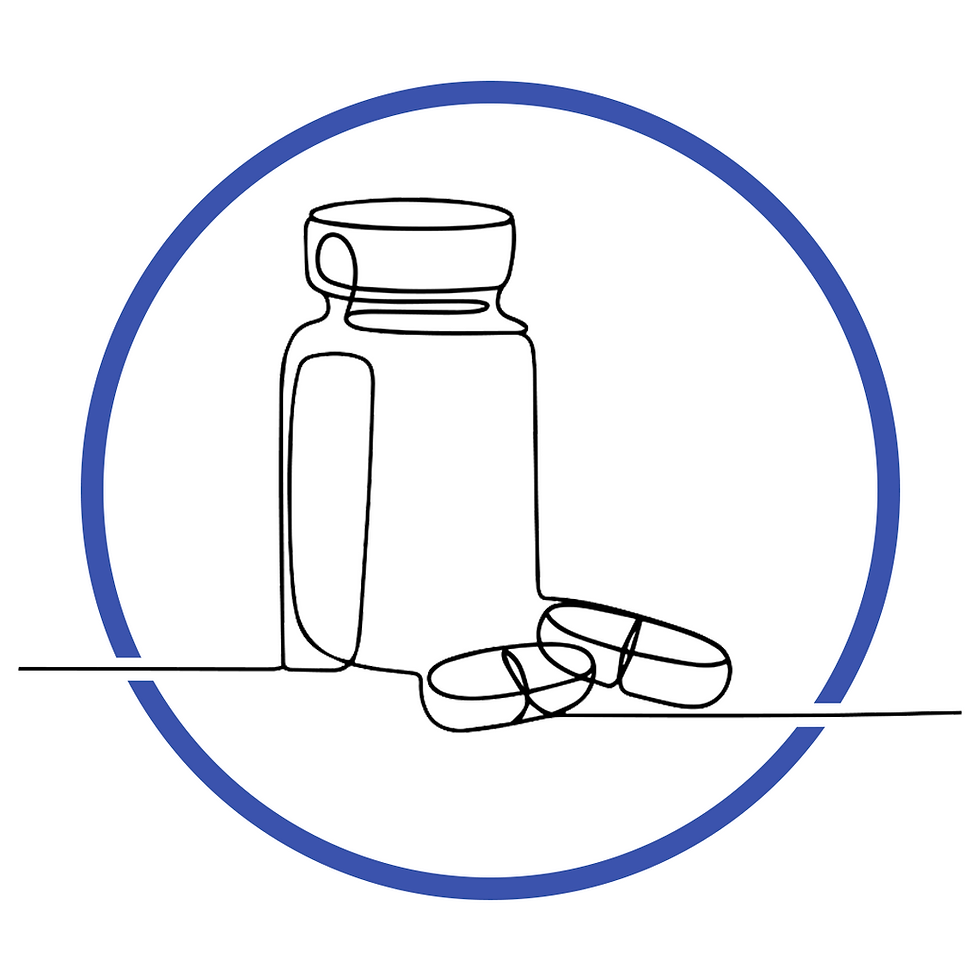October: Breast Cancer Awareness Month — Why It Matters
- thevikingeducation
- Oct 5
- 6 min read

October is recognised globally as Breast Cancer Awareness Month—a time to shine a spotlight on a disease that affects thousands of lives every year, and to remind ourselves of the power of early detection. While it can feel uncomfortable or worrying to think about, checking your body, knowing your normal, and acting promptly on any changes can make a real difference in outcomes.
In the UK, breast cancer is one of the most common cancers in women (and can also affect men or people with breast tissue). Early detection significantly increases the chance of effective treatment and survival.
This post covers why awareness and self-checking matters, how to do it, when professional screening applies, and what to do if you notice anything unusual.

Why Awareness & Self-Checking Are Important
1. You become familiar with your “normal”
By regularly checking your breasts or chest, you begin to recognise what’s normal for you—in shape, feel, texture, symmetry, and subtle variations. Then if something unusual appears (or changes over time), you’re more likely to spot it earlier.NHS guidance recommends checking about once a month.
2. Many breast lumps or changes are benign—but still need checking
Not every lump is cancer, but many benign conditions can present symptoms such as swelling, pain, or cysts. If there iscancer, early-stage cases are more treatable. NHS advice is that a GP should assess any new or unusual change rather than assuming it’s harmless.
3. Professional screening catches things you can’t feel
The NHS offers a breast screening programme for eligible people to detect cancers too small to feel. The screening programme reduces mortality by identifying cancers earlier.However, screening is not perfect and isn’t offered to everyone—so self-awareness complements, not replaces, formal screening.
4. Evidence supports the benefit of screening invitations
In England, women between ages 50 and 71 are invited for screening every three years.The NHS estimates that screening prevents many deaths annually by detecting cancers earlier.Also, national clinical guidelines emphasise that screening-related assessment should use a “triple assessment” (clinical exam + imaging + biopsy where needed) to ensure accurate diagnosis.
How & When to Check (Self / At Home)
Below is a practical guide, based on the NHS and other trusted UK sources, to checking your breasts or chest. Use it as a reference, adapt it to what is comfortable for you, and make it part of your routine.

What to look and feel for
When checking, be alert to (but not alarmed by) the following potential changes:
A new lump or swelling in the breast, chest, or armpit
Skin changes: dimpling, puckering, “orange-peel” texture, redness or rash
Changes in shape or size of one or both breasts
Changes in the nipple: inversion (turning in), rash, crusting, or discharge (especially if bloody)
Ulcers or sores on the breast or chest skin
Persistent pain in one spot (breast or underarm) that doesn’t go away
Note: breasts naturally change (for example with hormonal cycle, pregnancy, menopause) so it’s not unusual for texture or tenderness to vary. The key is noticing new or unusual changes.
How to check
Here’s a simple monthly check routine you can follow:
Look in the mirror
With your arms by your sides, then with arms raised.
Look for visible changes in shape, symmetry, skin texture, nipple appearance.
Also look for skin dimpling, swelling, or retraction.
Feel with your hands
Use the pads of your fingers (not the fingertips) to systematically feel the entire breast, up to the collarbone and across to the armpit.
Use three pressure levels: light, medium, then firmer (but not painful).
Use a circular motion or vertically (strip) motion, whichever works for you.
Gently squeeze the nipple to feel for discharge.
Use different positions
Lying down: place a pillow under your shoulder and raise the corresponding arm; this spreads out the tissue and may make feeling easier.
In the shower: wet skin can help fingers glide more smoothly—some prefer to start here.
You may find it easier to check shortly after your period (when breasts are less tender), or pick a consistent date each month (for instance, the first of every month). The NHS describes this process in its “How to check your breasts or chest” resource.
When to seek medical advice
See a GP (or breast clinic) promptly if you notice any of:
A lump or swelling in breast, chest, or armpit
Any change that is new or hasn’t gone away
Persistent pain in one area
Nipple changes, discharge, or skin changes as above
Anything else suspicious even if you feel well otherwiseNHS guidance emphasises that many symptoms are common and often not cancer—but it’s important to get them checked so that if they are serious, treatment can start sooner.
At a specialist breast clinic, tests may include mammogram, ultrasound, and biopsy (needle sampling) to determine whether the change is benign or malignant.
Screening via the NHS: What You Need to Know
Here’s how the NHS breast screening programme works in the UK:
Individuals registered with a GP and recorded as female are invited for screening every three years between ages 50 to 71.
The first invitation usually arrives between ages 50 and 53.
After 71, you won’t be automatically invited but you can choose to continue—contact your local screening unit.
If a screening image shows something abnormal, you’ll be referred for further assessment using the “triple assessment” approach (clinical exam, imaging, biopsy) for accurate diagnosis.
Some people with higher risk (strong family history, certain genetic predispositions) may be eligible for additional screening before the age of 50. NICE / CKS guidance covers this.
It’s helpful to keep your contact details with your GP up to date (address, phone, email), so you receive your screening invitation.
Limitations & caveats
Mammograms are less effective in younger women (under 50) because breast tissue tends to be denser, making interpretation harder.
Screening is a population-level tool—not perfect. It may miss cancers (false negatives) or suggest abnormalities that turn out benign (false positives). That’s why further assessment is needed if there is a finding.
Screening is not a substitute for being aware of your own body and acting on changes between screenings.
Overcoming Barriers: Encouragement & Tips
Despite its importance, many people delay or avoid checking or screening. Some reasons include anxiety, embarrassment, forgetting, or uncertainty about what to look for. Recent reports suggest that a large proportion of women in the UK do not check regularly.
Here are some tips to help:
Set a reminder (phone, calendar, app) to check monthly.
Tie it to a familiar time or habit (e.g. after a shower, before bed).
Start small: even a brief “quick look/feel” is better than none.
Bring a friend (for moral support, or to help you remember).
Know who to contact locally (GP, breast clinic, screening unit).
Stay informed: read reliable NHS / Cancer Research UK materials.
Don’t delay: if you notice something, schedule an appointment promptly.
Sample Monthly Self-Check Flow
Step | Action | Notes |
1 | Visual inspection in mirror (arms down / up) | Look for changes, symmetry, skin texture |
2 | Feel breast and chest (circular or vertical) | Use varying pressure, include armpits |
3 | Check the nipple | Gently squeeze to look for discharge |
4 | Recheck in alternate position | Lying down or standing (whichever felt less thorough) |
5 | Document any change | Size, location, what feels different |
6 | Act | If something new or persistent, contact your GP |
What Happens After You Report a Concern
If your GP thinks a sign warrants further testing, you may be referred to a breast clinic / specialist unit. Here’s what usually happens:
Clinical examination by a specialist
Imaging tests: mammography, possibly ultrasound
Biopsy (needle sampling) of suspicious tissue, if required
Results & consultation: findings are explained, further tests or treatment recommended
Treatment planning if cancer is confirmed
The goal is timely, accurate diagnosis—the NHS “triple assessment” approach is part of that.
Key Takeaways & Final Thoughts
Early detection saves lives—knowing your body and checking regularly gives you a head start.
Checking your breasts or chest is recommended about once a month.
The NHS invites eligible people for breast screening every three years between ages 50 and 71.
Never dismiss changes as “just nothing”—if it’s new, persistent or worrying, get it checked.
Encouraging awareness and conversations around breast health throughout the year (not just October) helps break down fear and stigma.
Your body matters. Your health is worth a check.




Comments